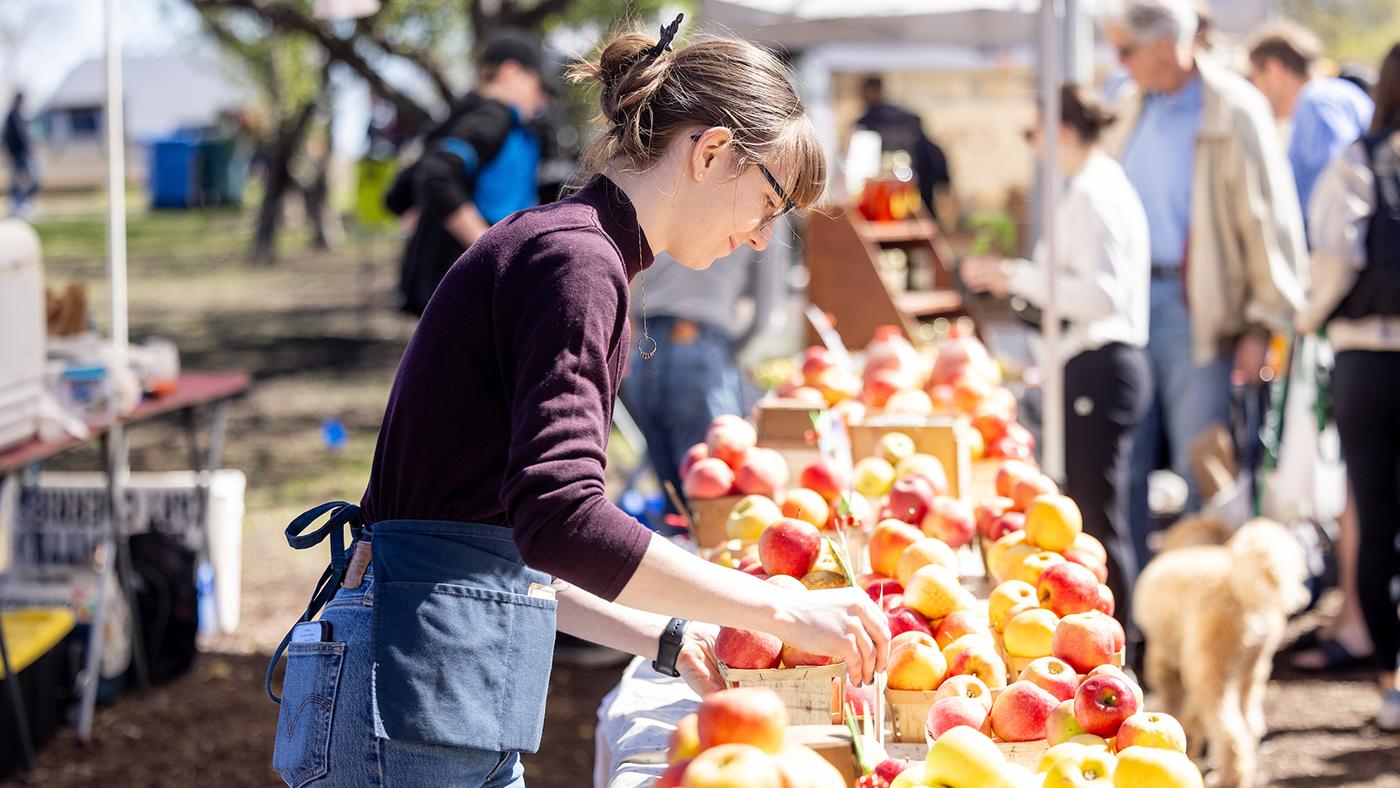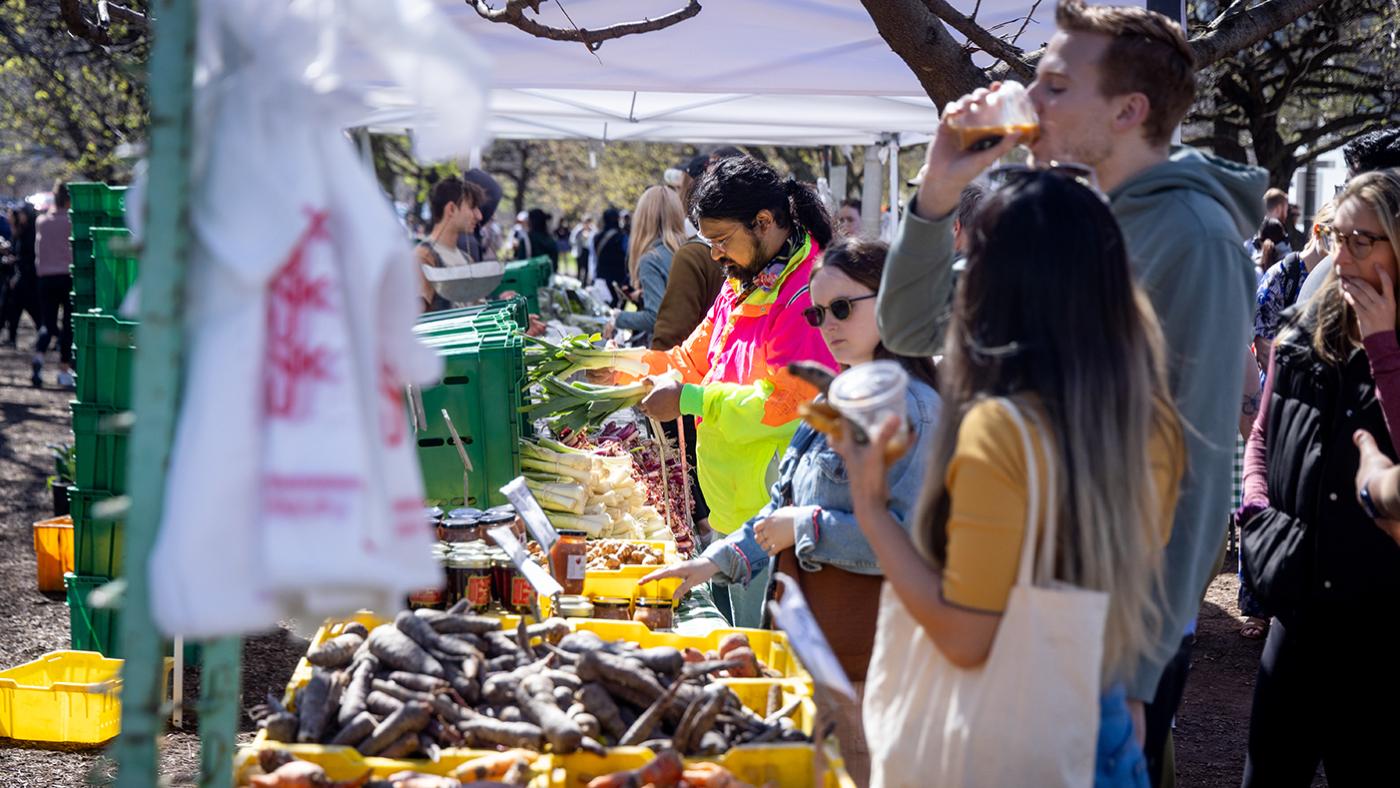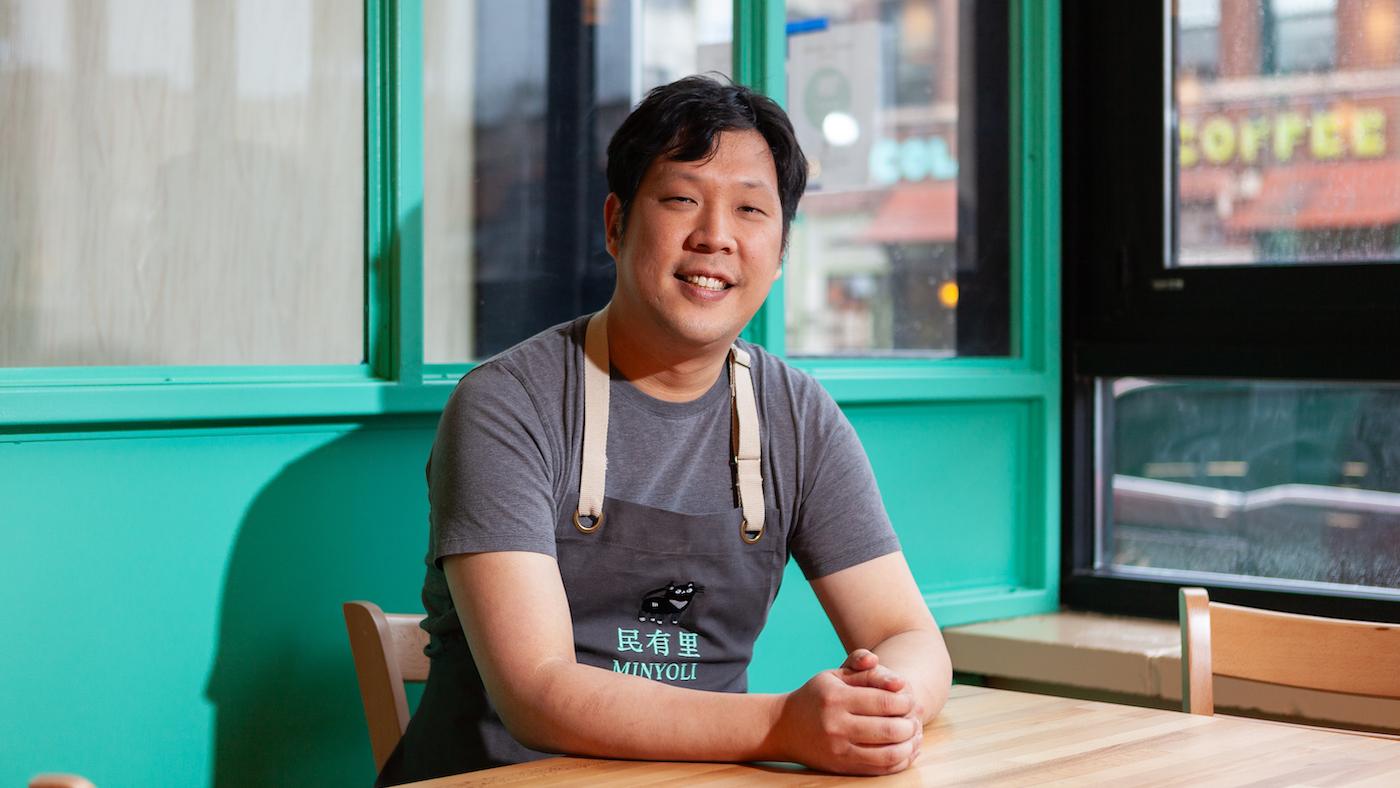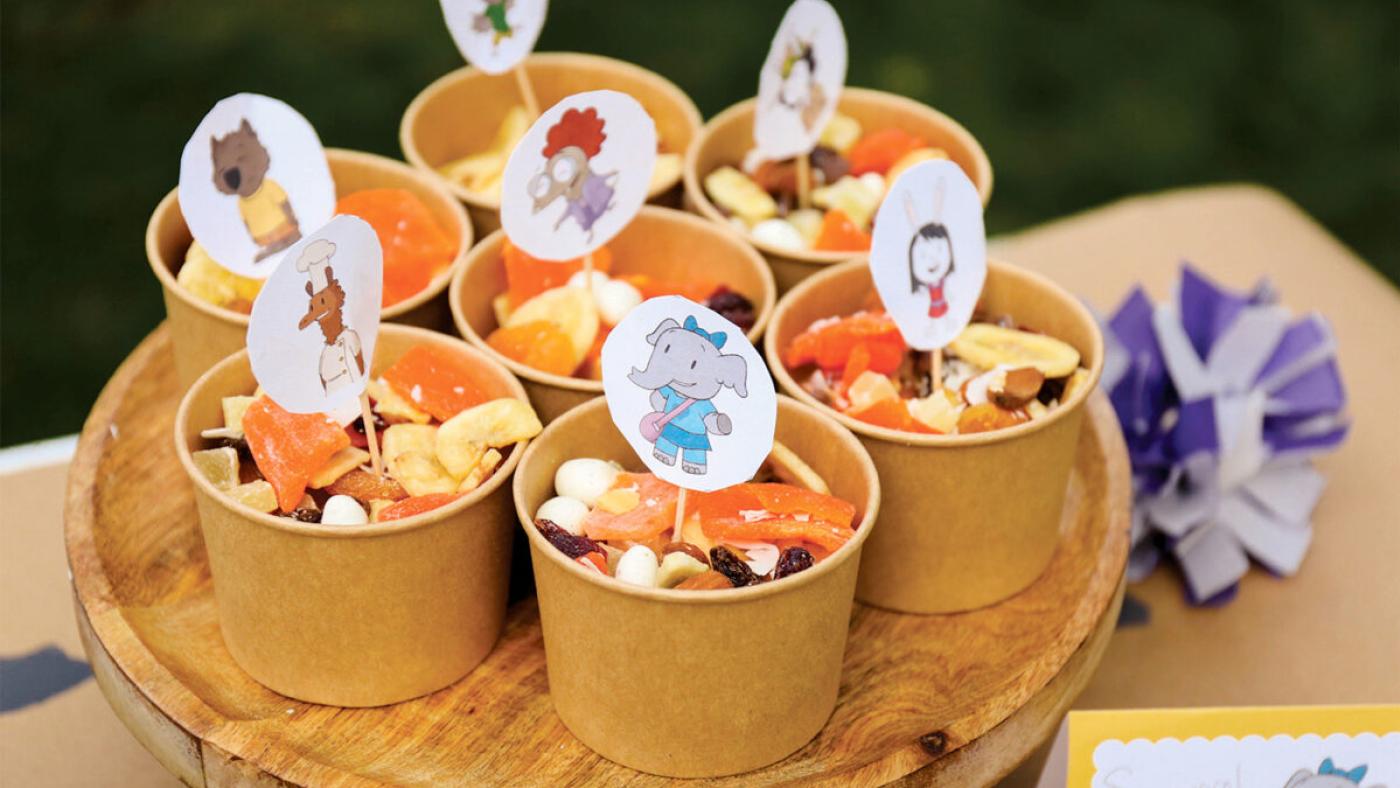Kimjang traditionally takes place in the fall, when cabbage is plentiful and ready to be harvested, although in modern times people like Hwang’s mother make kimchi several times a year.
How the Traditional Korean Act of Making Kimchi Preserves Vegetables, Memories, and Community
Daniel Hautzinger
October 20, 2023

Get more recipes, food news, and stories by signing up for our Deep Dish newsletter.
Winter is coming. The vegetables need to be harvested before the first frost, but there is too much to eat all at once, and some has to be saved for sustenance over the long winter. So neighbors and family gather to preserve the bounty, brining Napa cabbage heads with sea salt harvested over the summer before rubbing in a pungent paste made from red chile peppers dried in summer and seafood caught and salted in the spring. The red-stained cabbages are then sealed in an earthen jar and buried to ferment and become bright, spicy kimchi that will serve families through the cold, dead months.
This is the most traditional form of the communal practice of kimjang, or the making of the Korean staple of kimchi. “Kimjang is such an interesting part of culture, because part of it is harvesting every single ingredient together as a community, making it as a community, and then sharing it with your neighbors, because each family has their own recipes,” says Julia Hwang, the marketing coordinator of the Korean Cultural Center of Chicago (KCCoC) in the northwestern suburb of Wheeling.
Large, collective kimjang usually takes place in the fall, around the time of the Korean harvest festival of Chuseok or Hangawi. (Chuseok is derived from Chinese characters and literally translates to “autumn evening;” Hangawi is Korean for a big day in autumn. The holiday is the Korean version of the Mid-Autumn Festival celebrated through East and Southeast Asia.) The KCCoC hosted a Hangawi celebration this year on September 30, during which guests could learn how to make kimchi during their own kimjang, as well as partake in games, dancing, and other activities.
Photographer Jack X. Li documented the festivities and the process of making kimchi there.
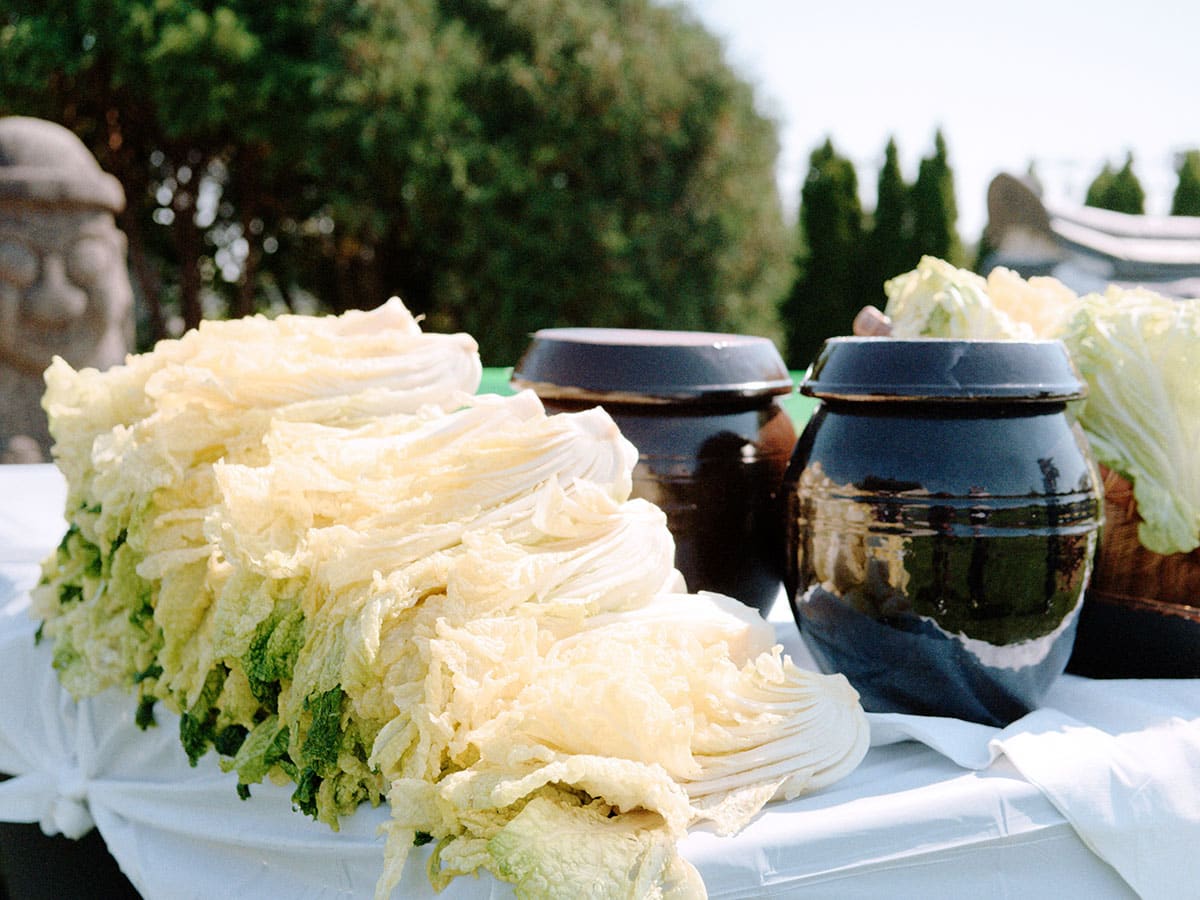
The cabbage is first scored with a knife, then brined for several hours with sea salt. The salt draws out water, slows decomposition, and allows beneficial lactic acid bacteria to flourish and cause fermentation.
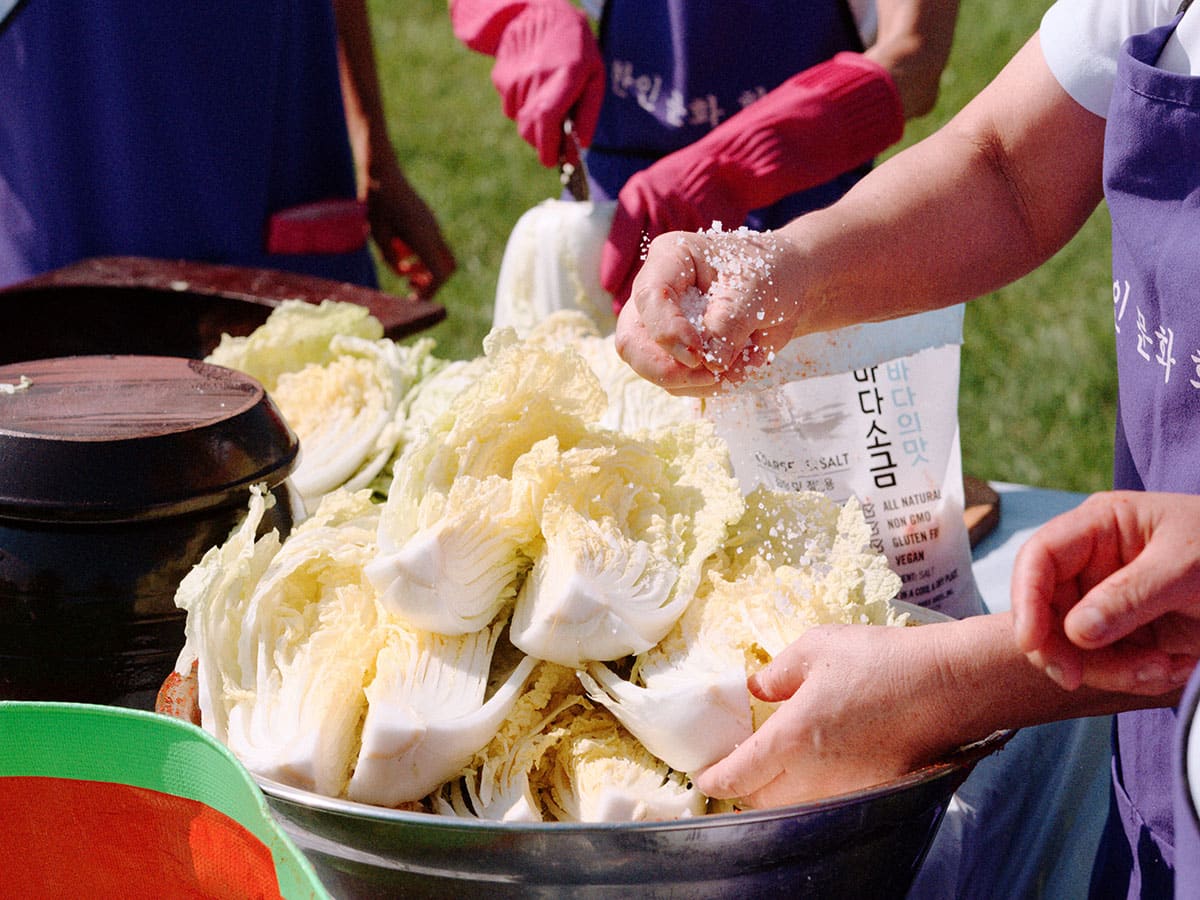
There are endless variations in kimchi recipes, but common ingredients are scallion, radish, ginger, garlic, carrot, and Asian pear for sweetness, although white sugar is often used instead. Hwang and her family don’t add ginger, per the preferences of her chef grandmother. “I tell that to other people, and they’re like, ‘That’s actually criminal,’” she says.
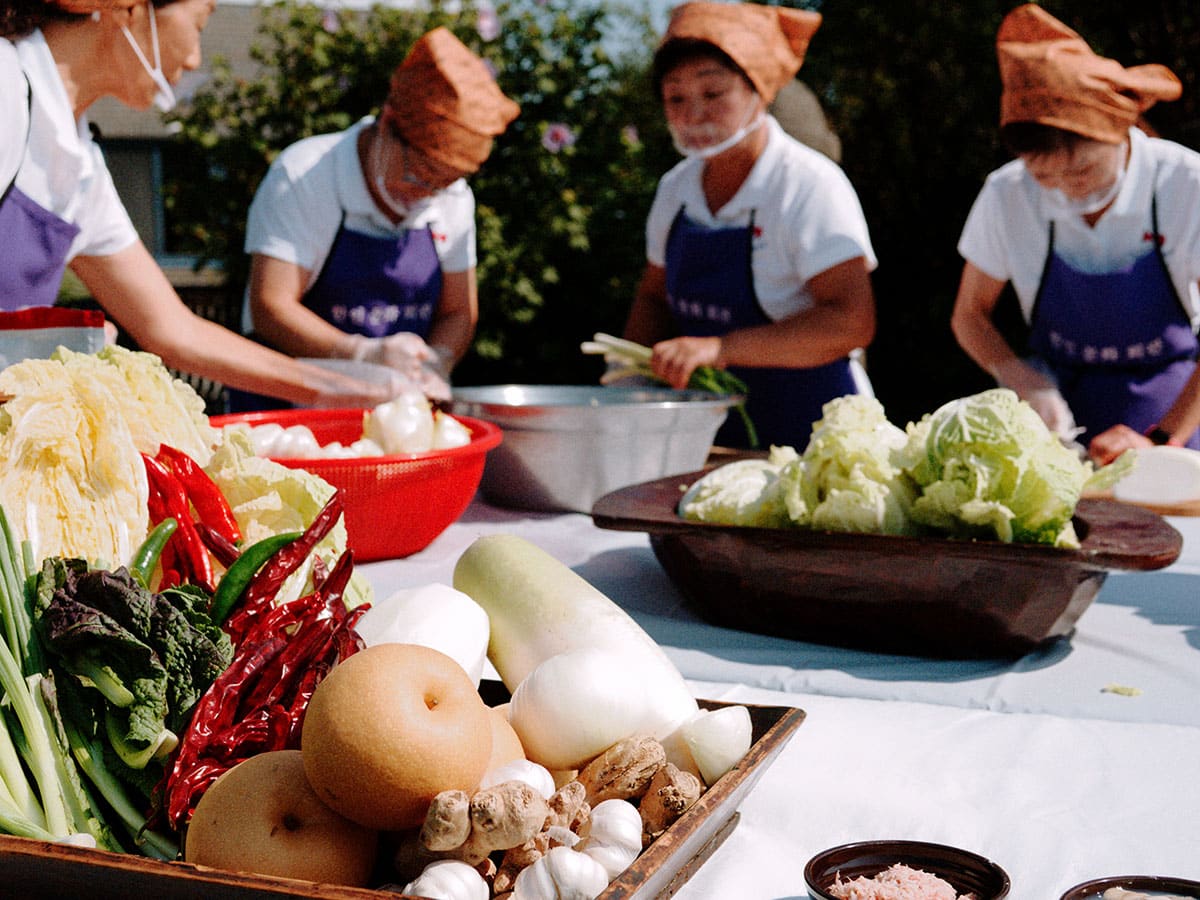
Those ingredients are chopped and mixed with gochugaru, a staple of Korean cuisine made from dried and crushed red peppers. Fish sauce, shrimp paste, and sesame are also frequently added. The combined paste gives the kimchi its depth of flavor as well as vivid red color.
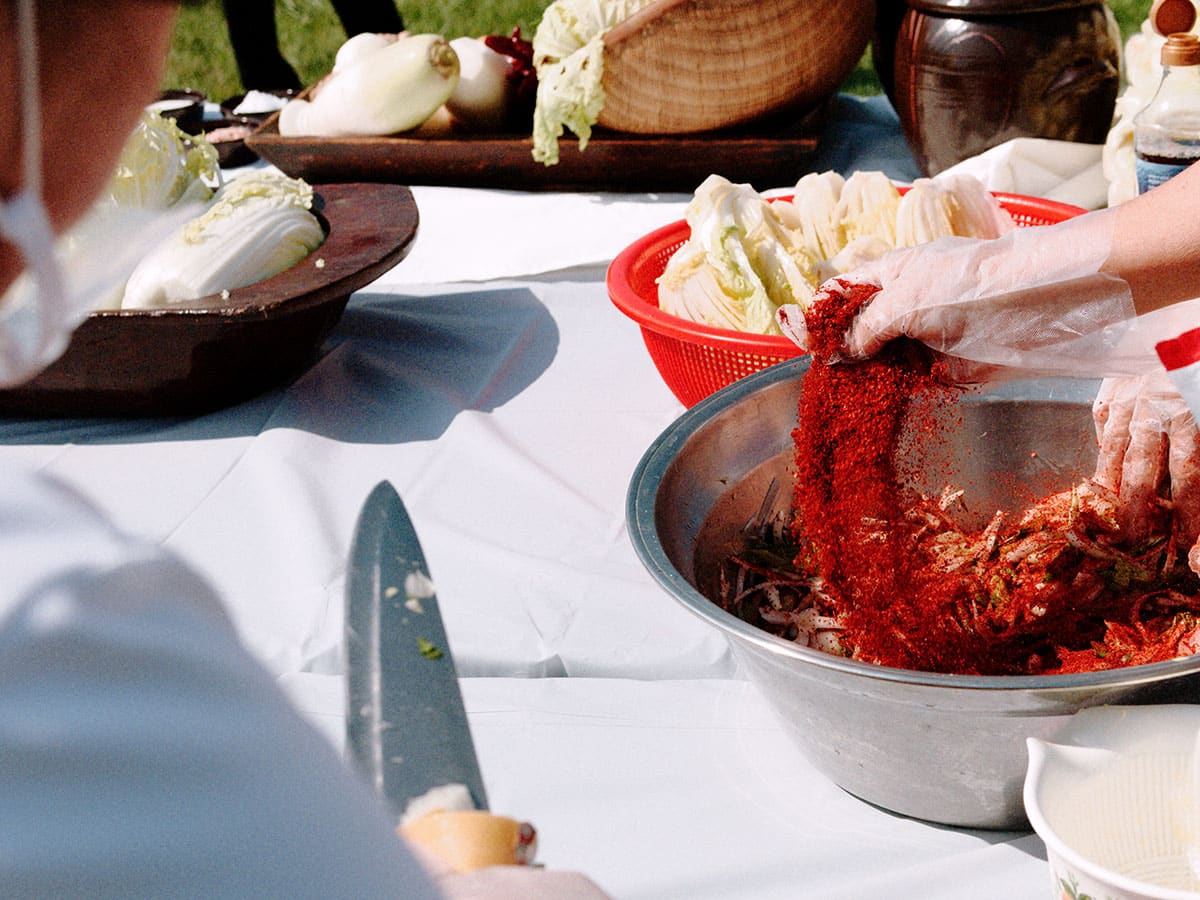
Sometimes pul – edible glue made from water and flour or glutinous rice powder – is added to the mixture to thicken it and make it easier to lather over the cabbage.
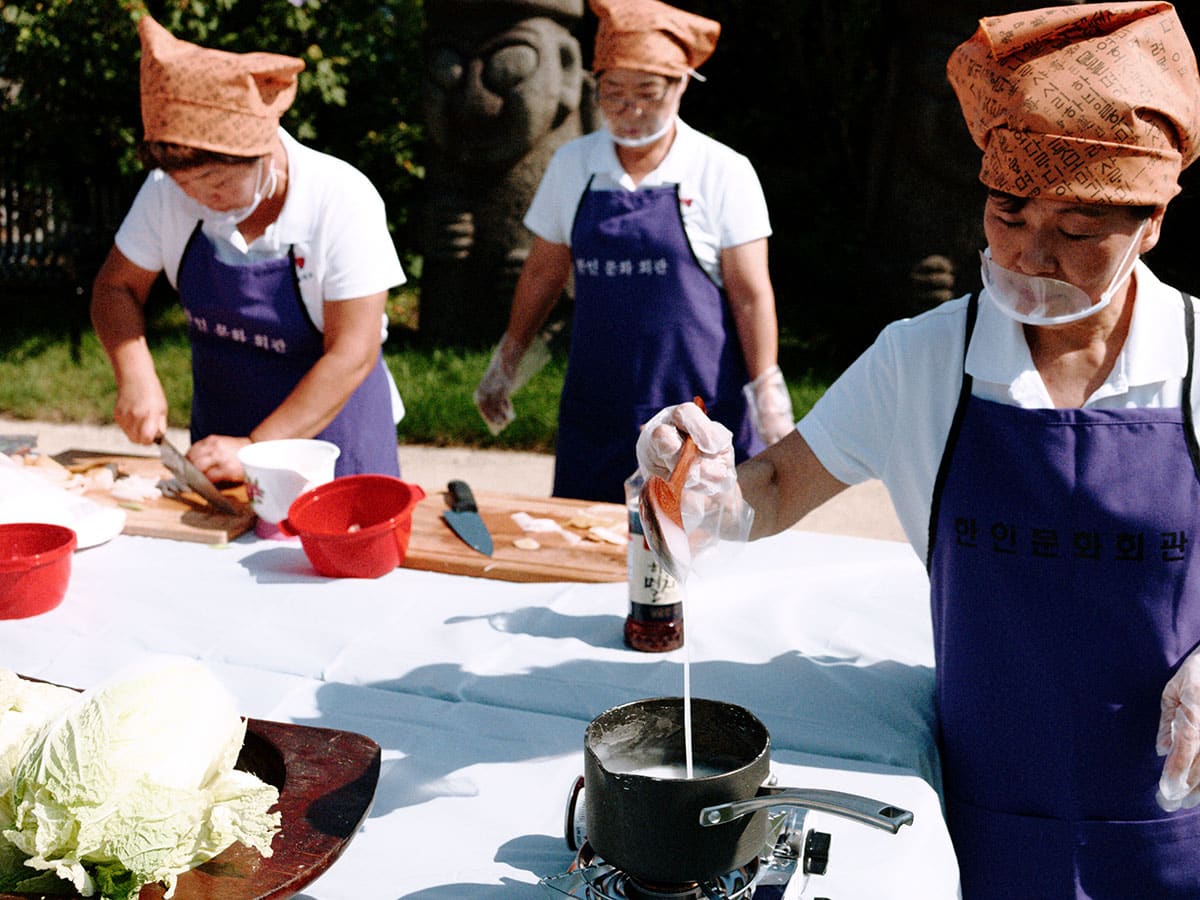
Kimjang is often a communal act, traditionally carried out by women. “Kimchi making is something your whole family gets involved in, or your whole community,” says Jennifer Kim, a Chicago chef who explored all sorts of fermentation and pickling over the pandemic and is currently the chef de cuisine at Proxi in the West Loop. “My mom, my grandma, and maybe a couple of close family friends would come together. We used to have this giant plastic tub and everyone would just squat over it...It was sort of an excuse to talk, laugh, gossip, and just spend a couple hours together.”
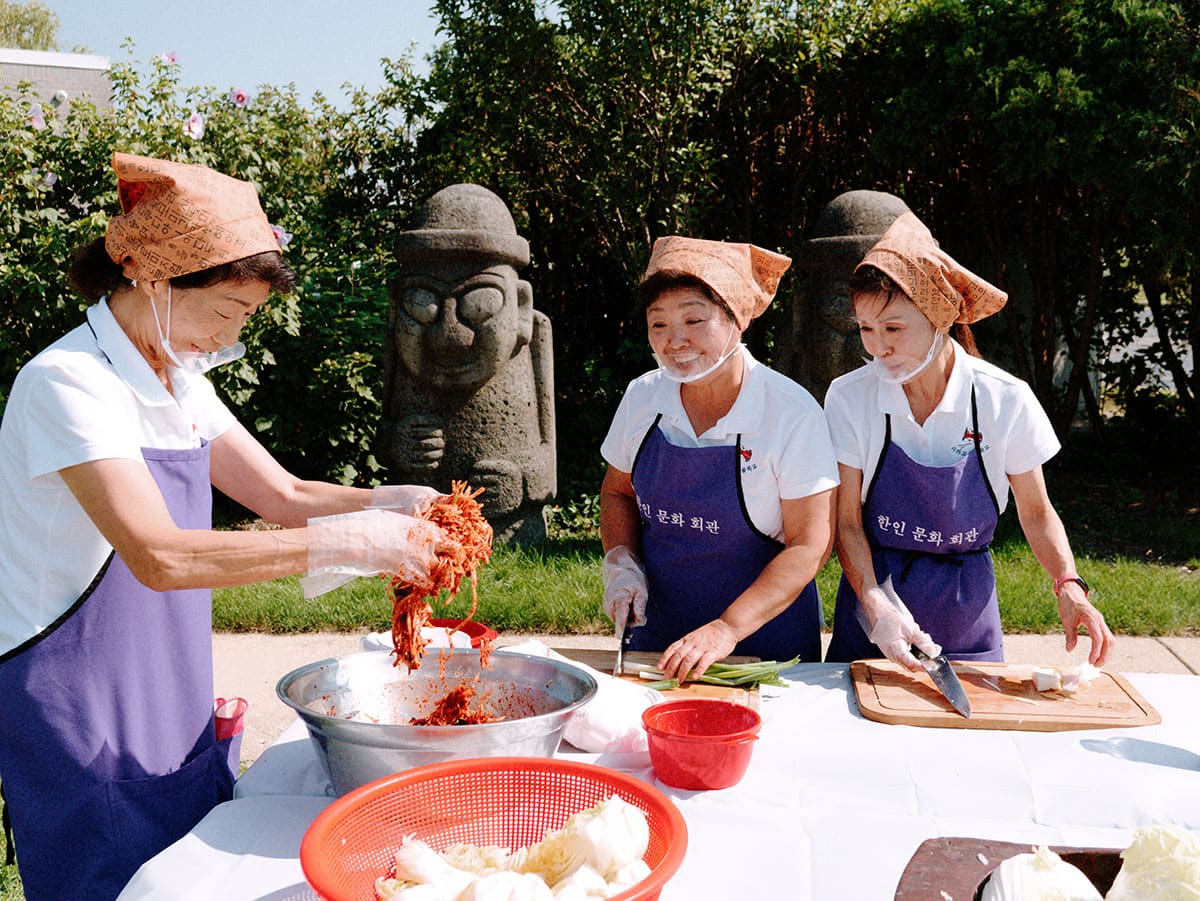
The cabbage is rinsed of its brine, and the gochujang-stained paste is smeared over and between its leaves. Some people keep the cabbage as a whole head, while others halve or quarter it – or just chop it all up and mix it with the paste.
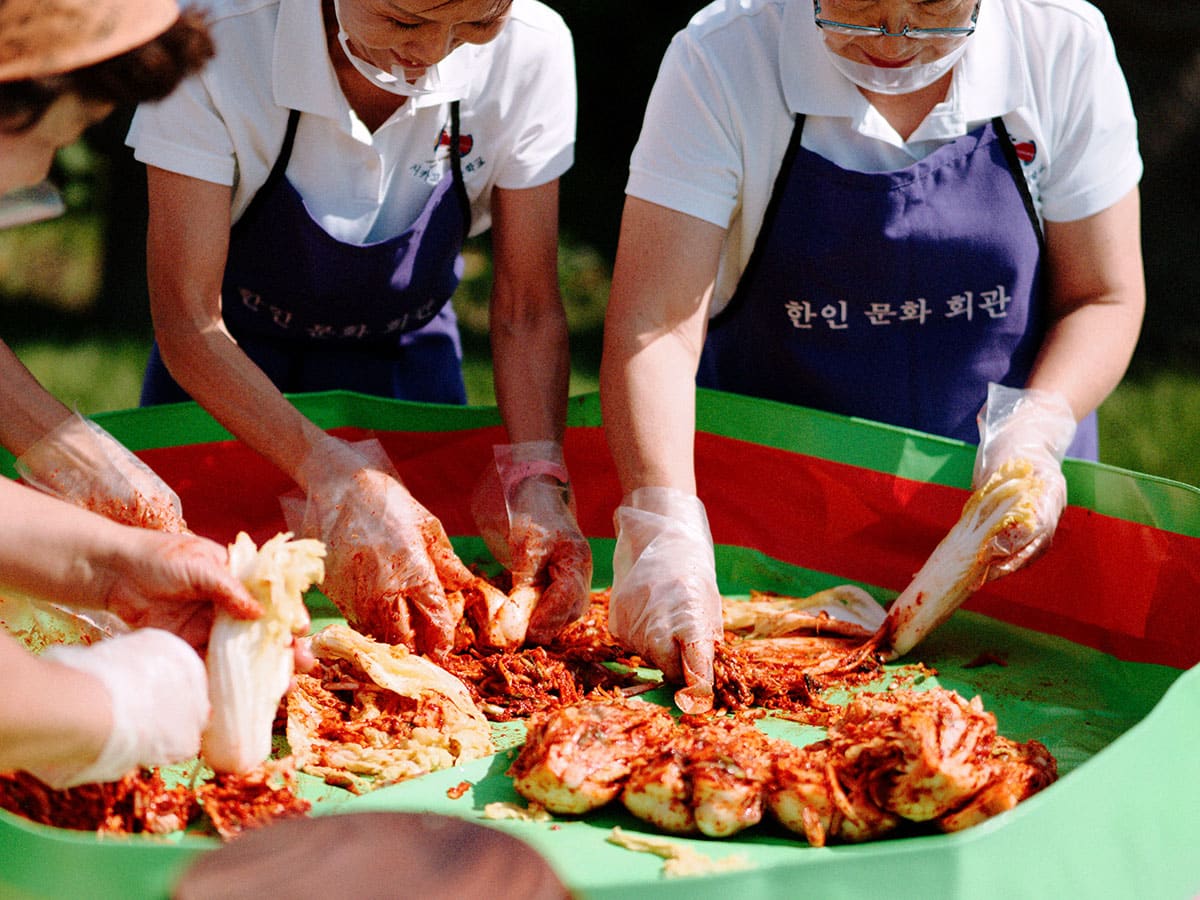
The cabbage is then rolled tight and packed into a container – in olden times, an earthen jug called a hang-ah-ri. It is left to ferment for anywhere from days to weeks, depending on how robust one likes the flavor. When the desired pungency is reached, it is transferred to a fridge, where the cold temperature slows the fermentation, allowing the kimchi to last for months.
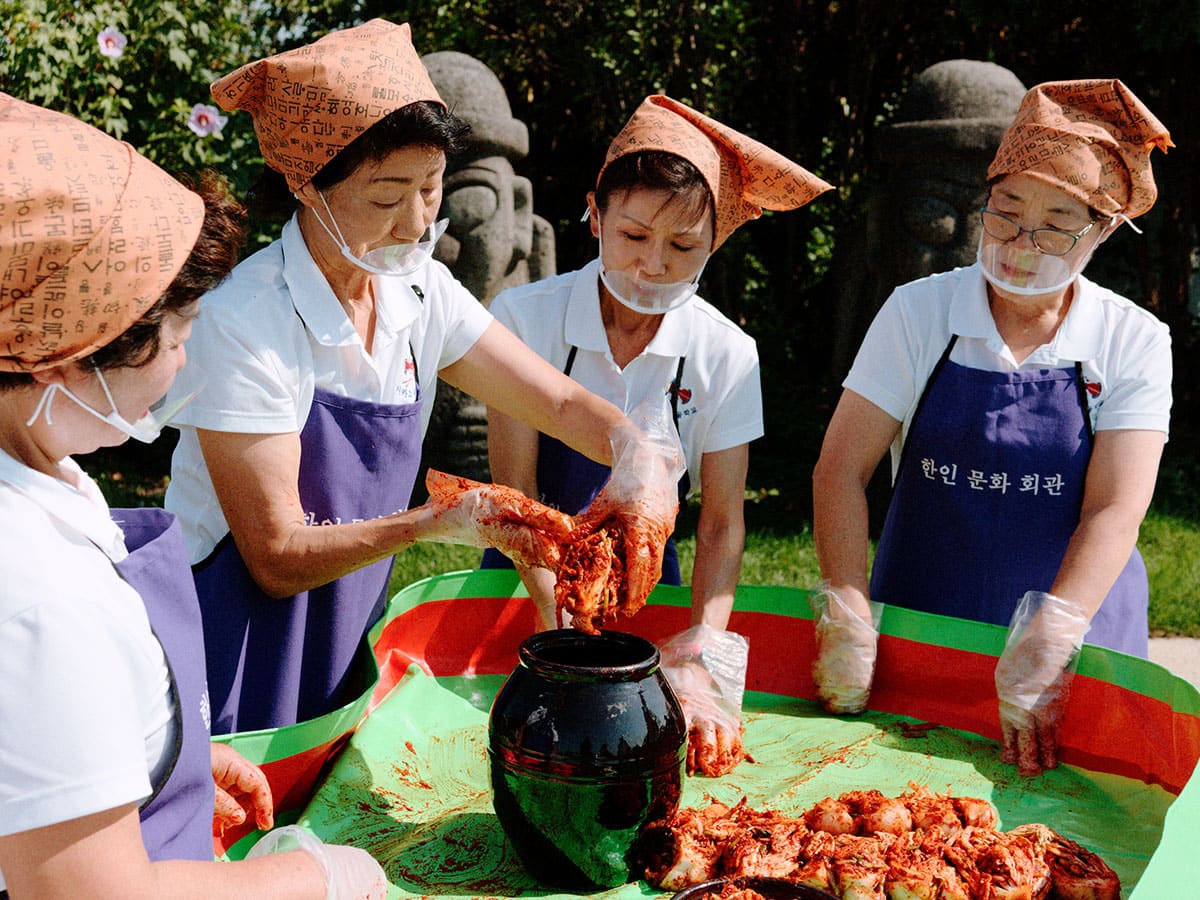
Before refrigeration, the kimchi would be buried, preventing it from freezing over winter and keeping it cool over summer. Nowadays there are specialty refrigerators designed specifically for storing kimchi. “We've been telling everybody we've achieved the American dream by having a kimchi refrigerator at home,” Hwang says of her family with a laugh.
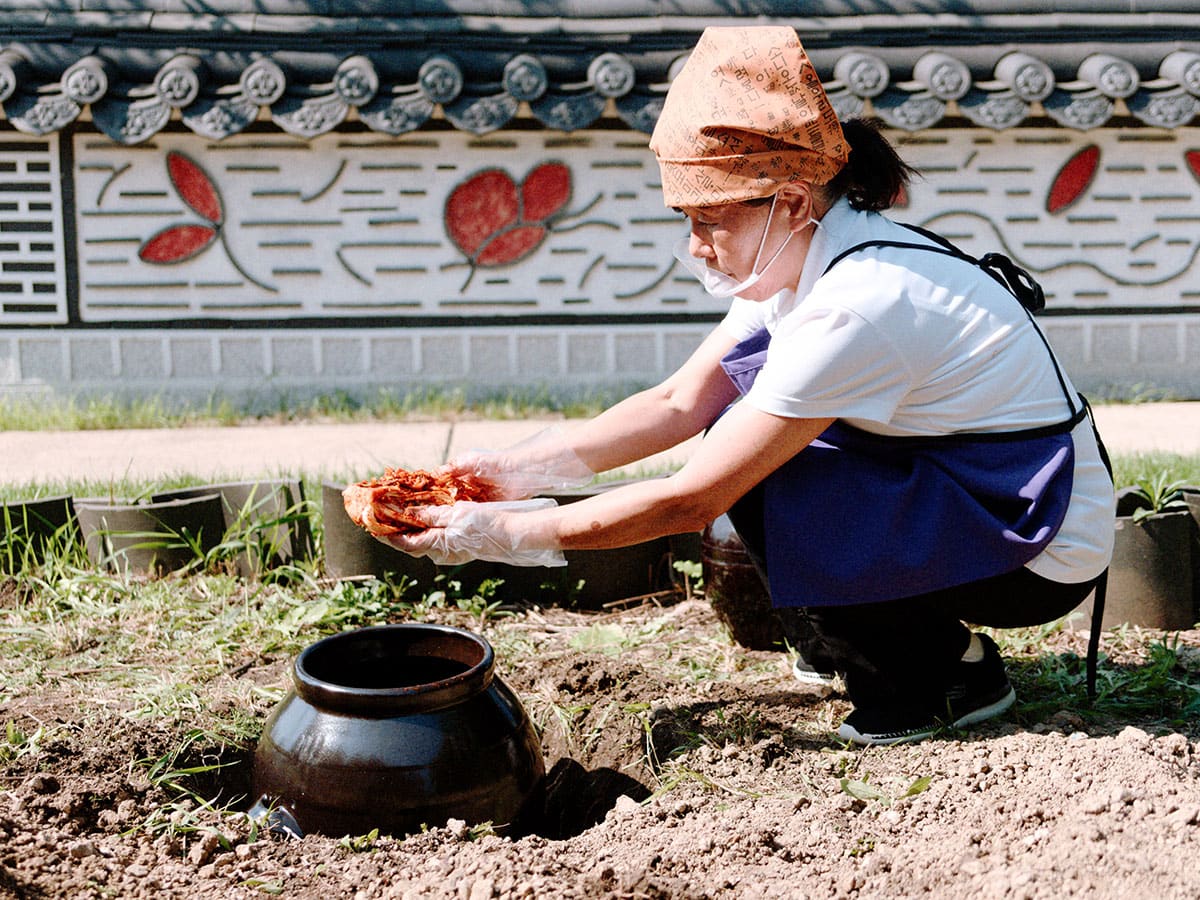
Kimchi fridges contain more than just the quintessential Napa cabbage-gochugaru version. “Kimchi is so broad and so big,” Kim says. “There’s over like 200 different recipes, and a lot of [the variation] is familial and also regional.” There are non-spicy styles more common in the north that lack gochugaru, as well as versions that center on different vegetables such as radish, cucumber, green onion, or mustard greens.
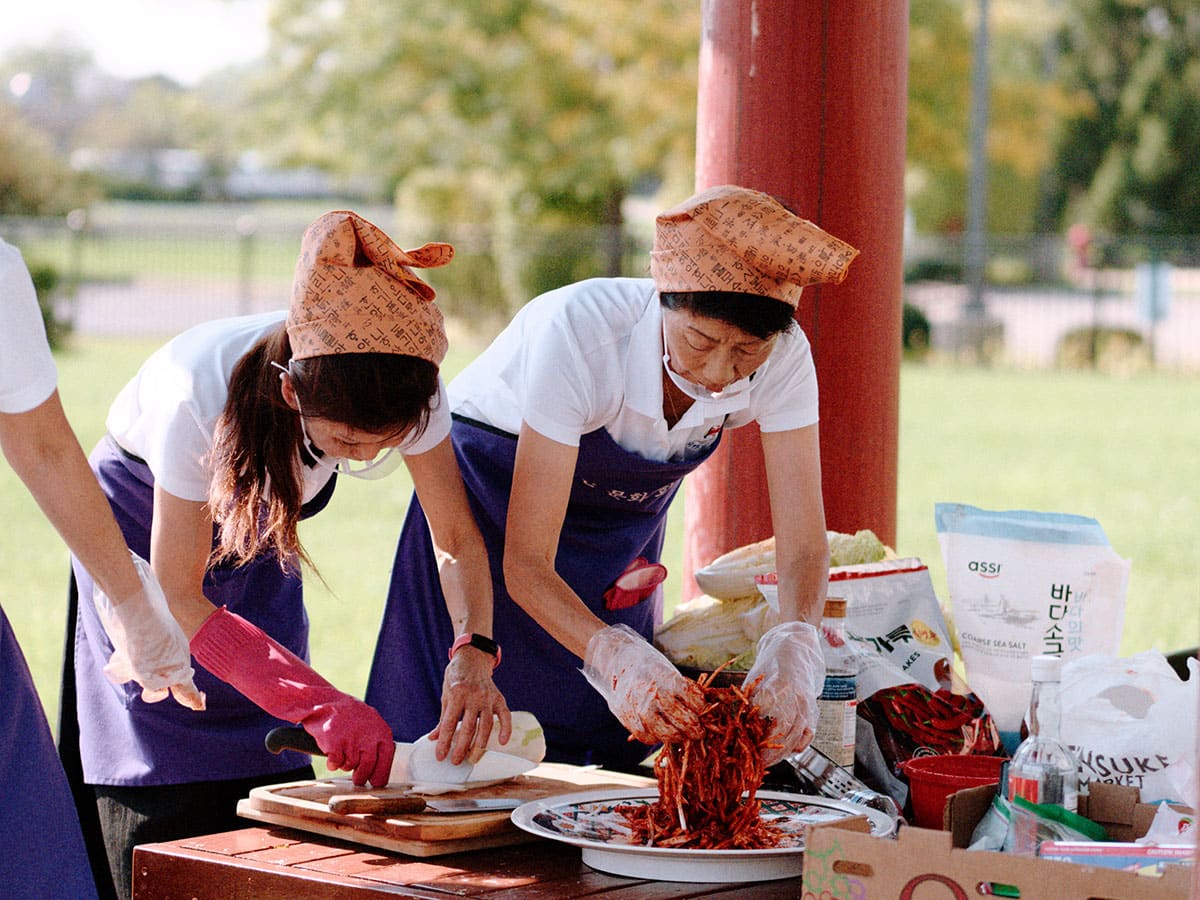
In southern coastal areas, salted seafood is commonly added to kimchi. On Hangawi, revelers might mix fresh oysters into a portion of the not-yet-fermented kimchi they just made to accompany a meal of sooyuk, or boiled pork. “You spent the whole day making [kimchi] and you can’t wait for two days,” Hwang says. The food could be accompanied by the lightly sweet, slightly effervescent rice wine makgeolli.
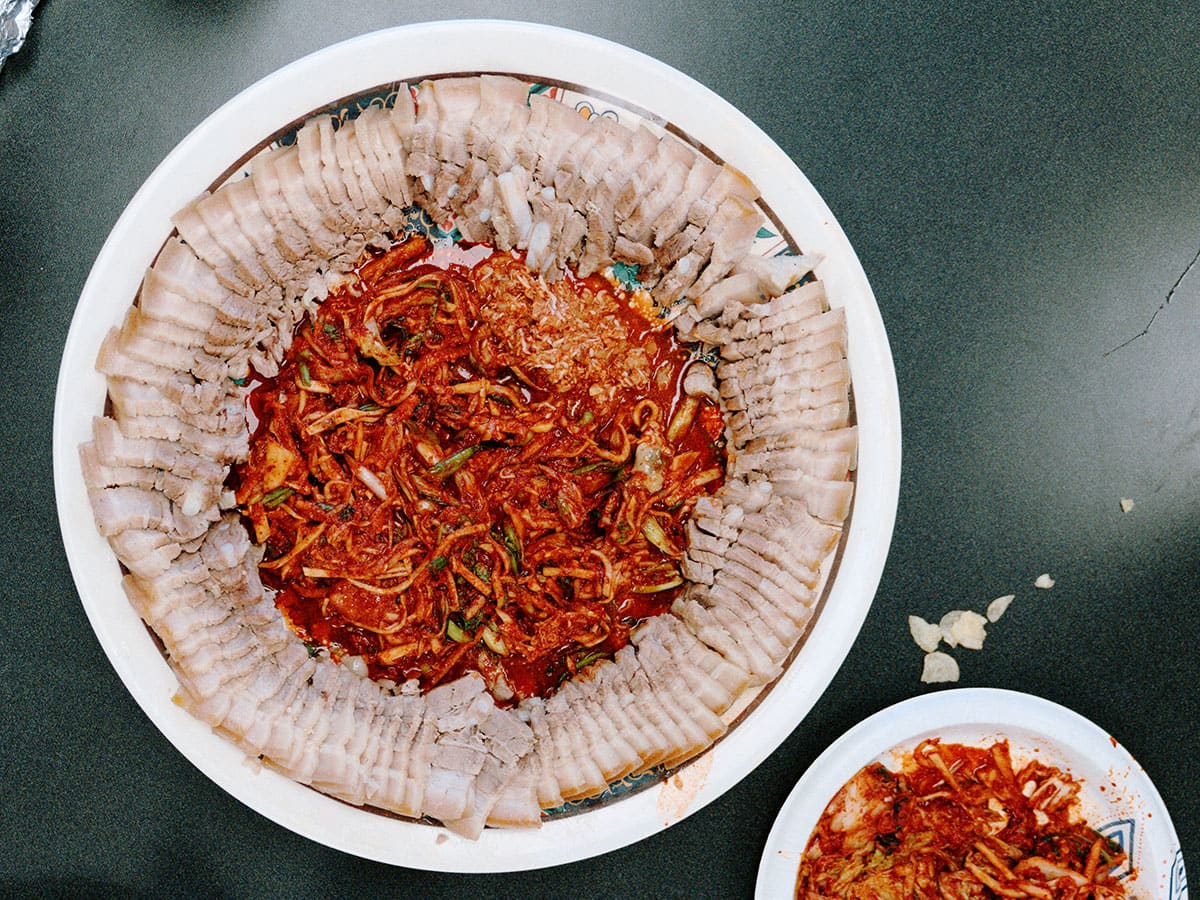
Songpyeon, a dessert rice cake often filled with red bean paste, sesame, or chestnut, is also an integral part of Hangawi. “A lot of it is cooking and eating and drinking,” Hwang says of the holiday. “It’s kind of the one time a year where you meet up with everyone in your family.”
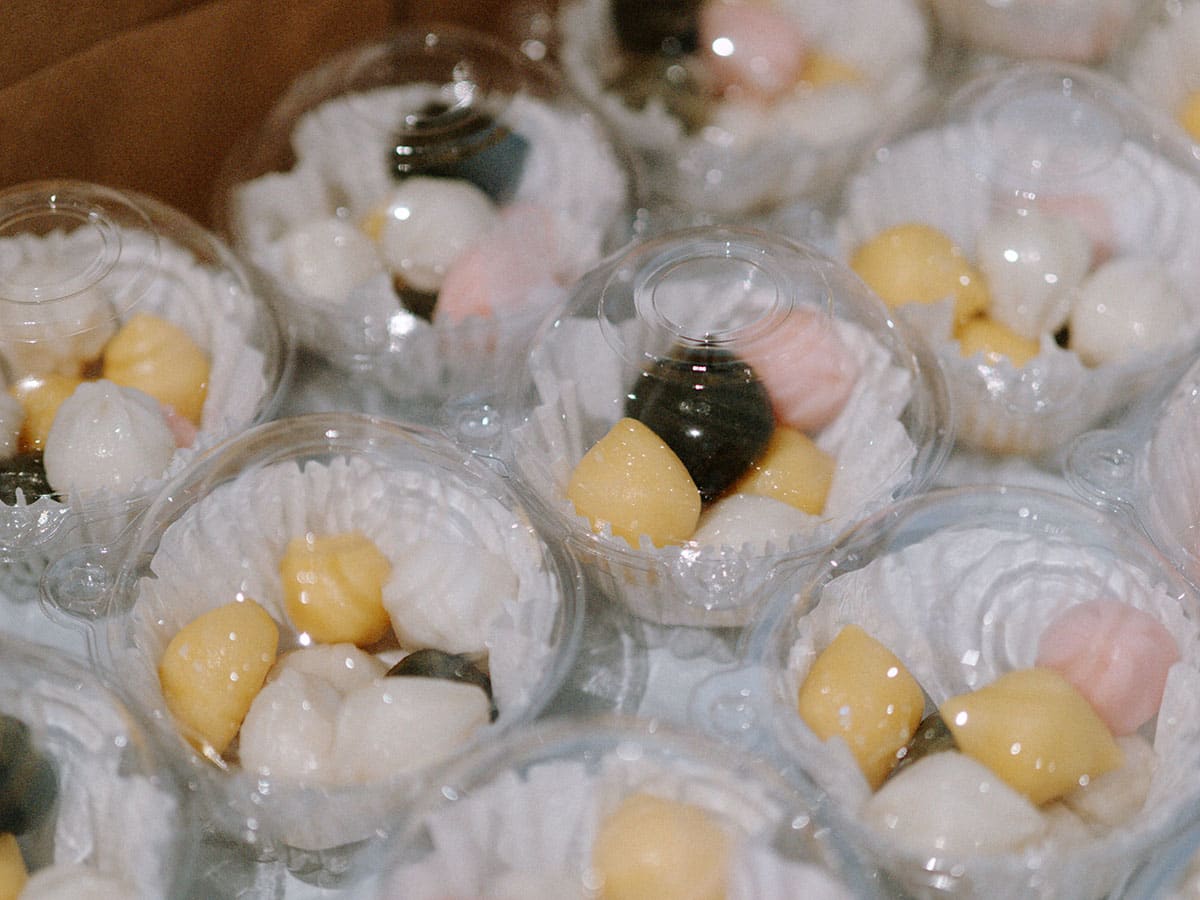
Hangawi includes an element of giving thanks to one’s ancestors in the hopes of an abundant harvest, as Hwang explains, sometimes garnering it the title of "Korean thanksgiving" in the West. Kimjang is a way of preserving that harvest. “It’s a really good and sustainable way to think about food,” Hwang says.

“Fermentation is ingrained in Korean culture, so it’s ingrained in the way I cook,” Kim says. “When farmers would have surpluses of anything that they couldn’t sell, it was like, ‘How do we make this last?’ And the answer is always fermentation.”
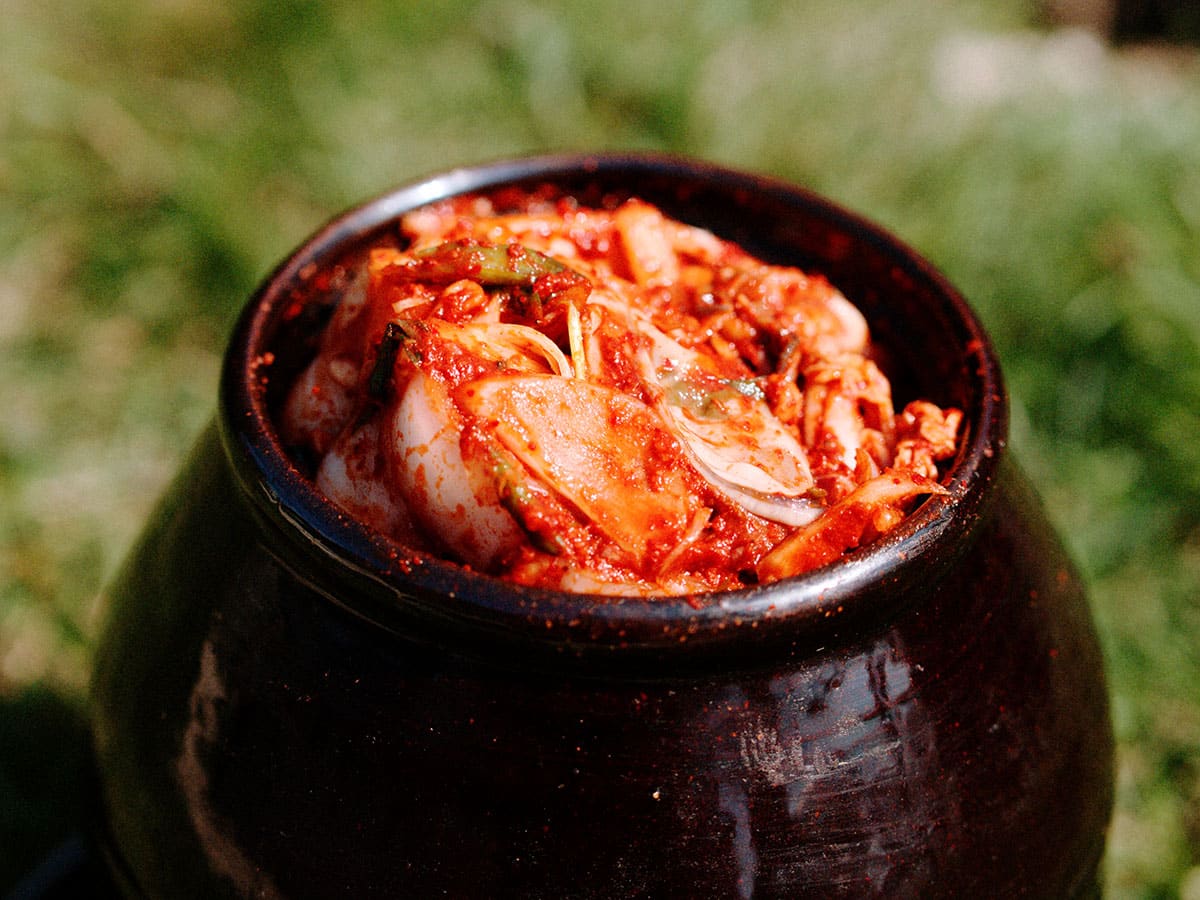
Kim is fascinated by the “bridges” fermentation provides to other cultures and cuisines. “Preservation does not have a central cuisine or culture that it comes from,” they say. They have experimented with making pickles, capers, vinegars, Italian sott’olio, French confit, and German sauerkraut, in addition to the Korean condiments chojang and ssamjang and the plum-based sweetener maesil cheong. Preservation through fermentation is “just something so human.”
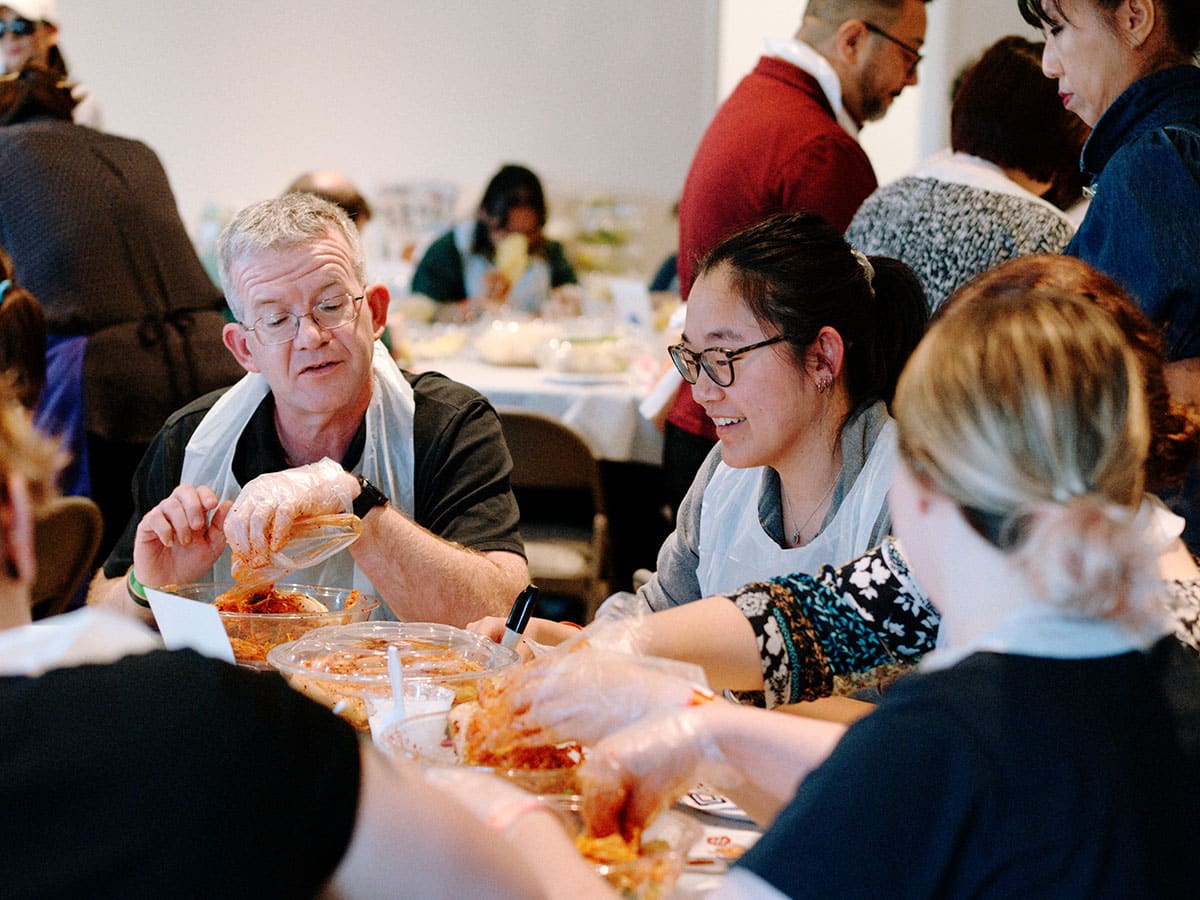
“As we celebrate these bountiful harvests that we have hopefully had this year, we also know it’s waning,” Kim continues. “We know the winter is coming, so how do we take care of everyone in our community to make sure that we have enough to sustain us, so that when spring comes, we can celebrate.”
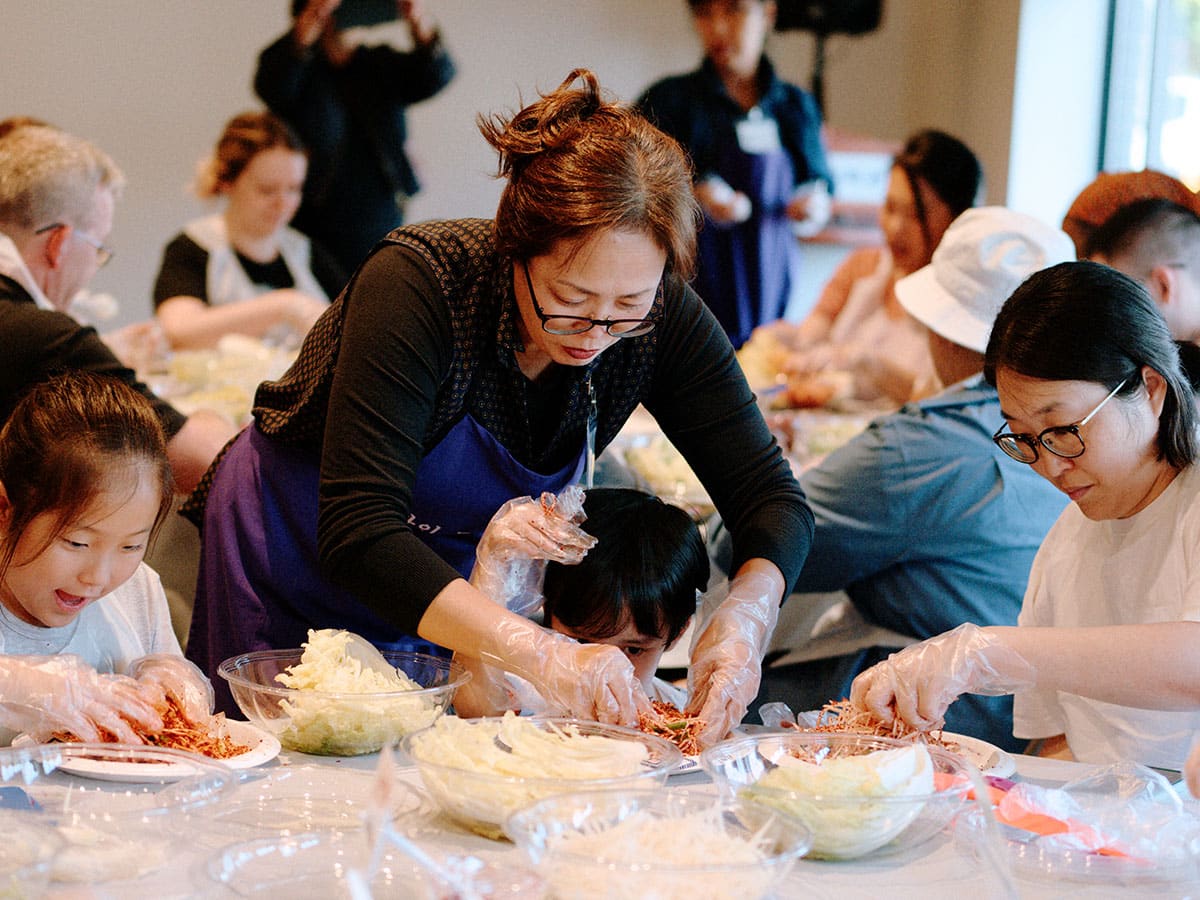
UNESCO has named kimjang an “intangible cultural heritage” that should be valued and preserved, writing that, “The collective practice of Kimjang reaffirms Korean identity and is an excellent opportunity for strengthening family cooperation. Kimjang is also an important reminder for many Koreans that human communities need to live in harmony with nature.”
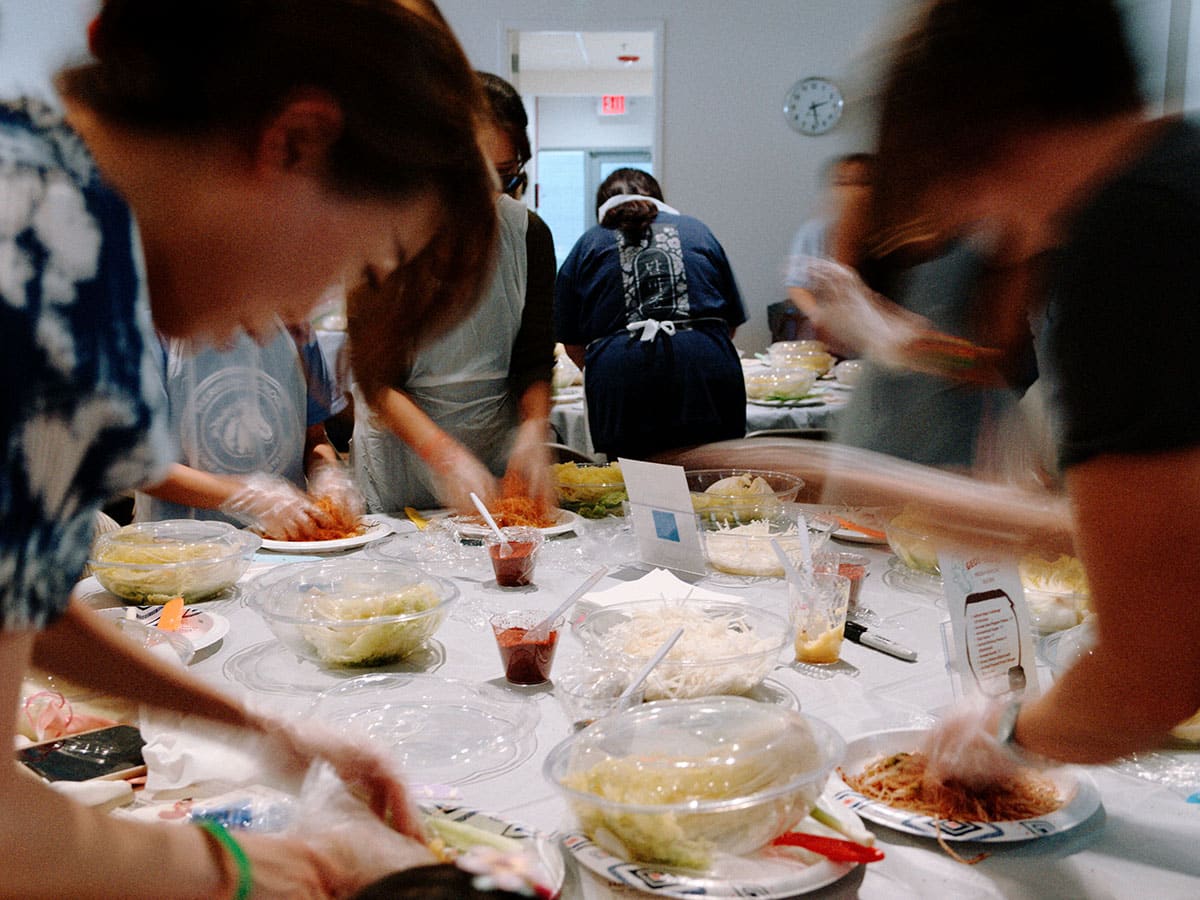
Kim recalls that, when their mother and grandmother made kimchi, the kids would also be involved. “We would peel the garlic or cut things in half if we could use a knife. For me personally, it was very family-focused, and we would do it at church as well. So it was very community-based.”

When Kim’s parents first came to the United States, “the access to Korean products was very minimal, so the first decade or so that they were living here, they weren’t able to do anything like kimjang. They really didn’t have a community here.”
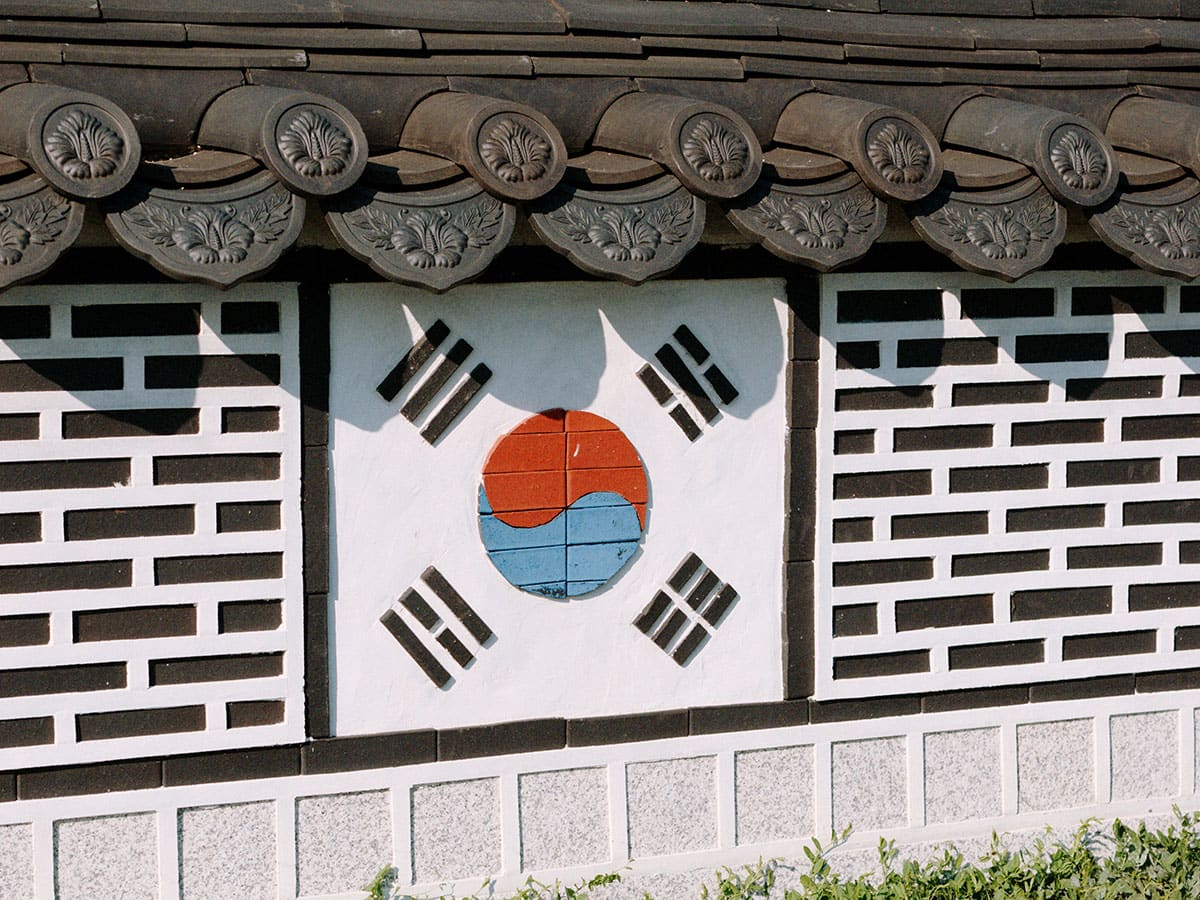
“It wasn’t until Korean grocery stores or products were more widely available and there was a bigger Korean community within Chicago that something bigger than just [involving] immediate family members was a part of any of our lives in the States,” Kim continues.
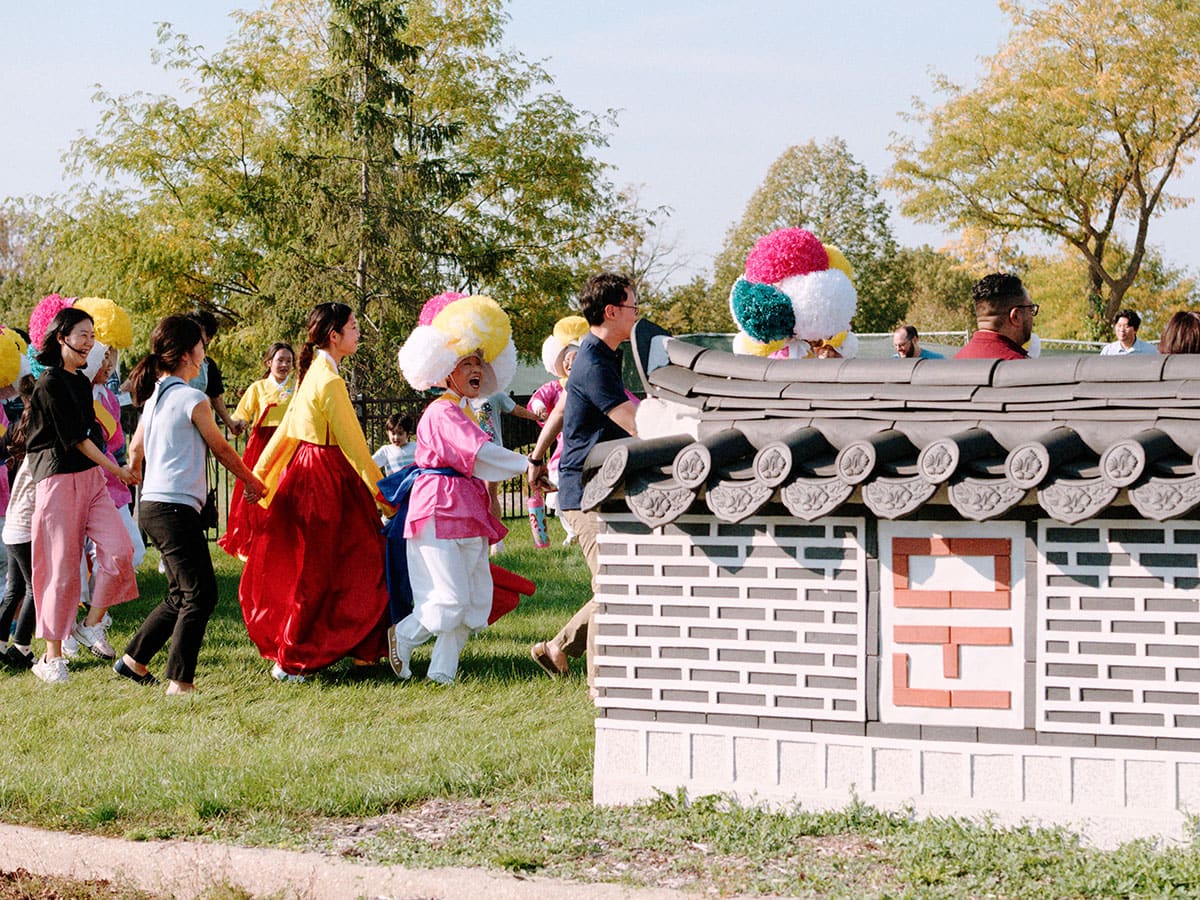
Through its marvelous alchemy, kimjang helps preserve not just food but also memories and communities. “It’s coming together and talking about the year that you had, and how that affected you communally or individually, and being able to share those stories,” Kim says.
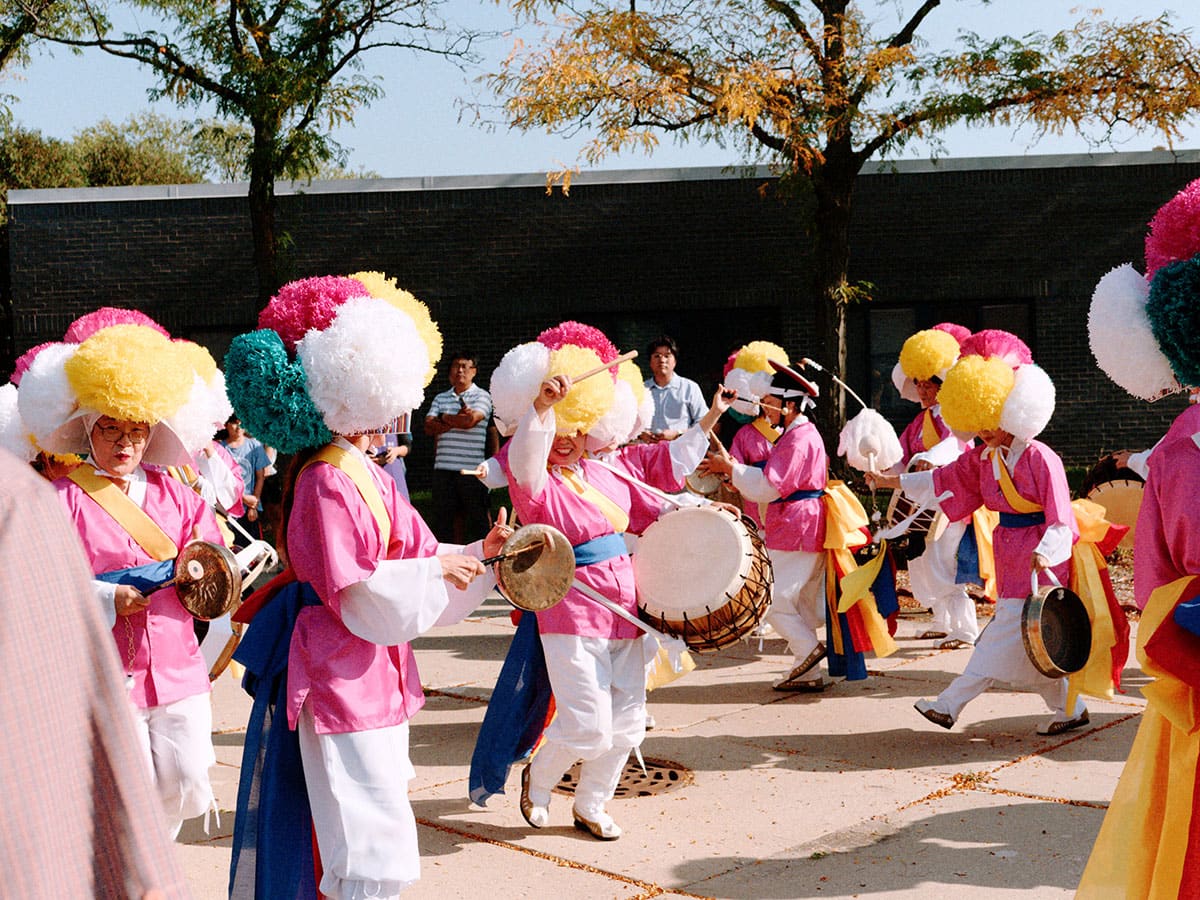
Kimchi and other preserved foods are “time capsules,” Kim says. When you dip into a jar from months or even years ago, it brings you back to when you preserved it: what was happening in your life, whom you made it with, how you were feeling. “As you open them or eat them or share them, you are able to share these experiences as you’re enjoying this thing that you made.”


